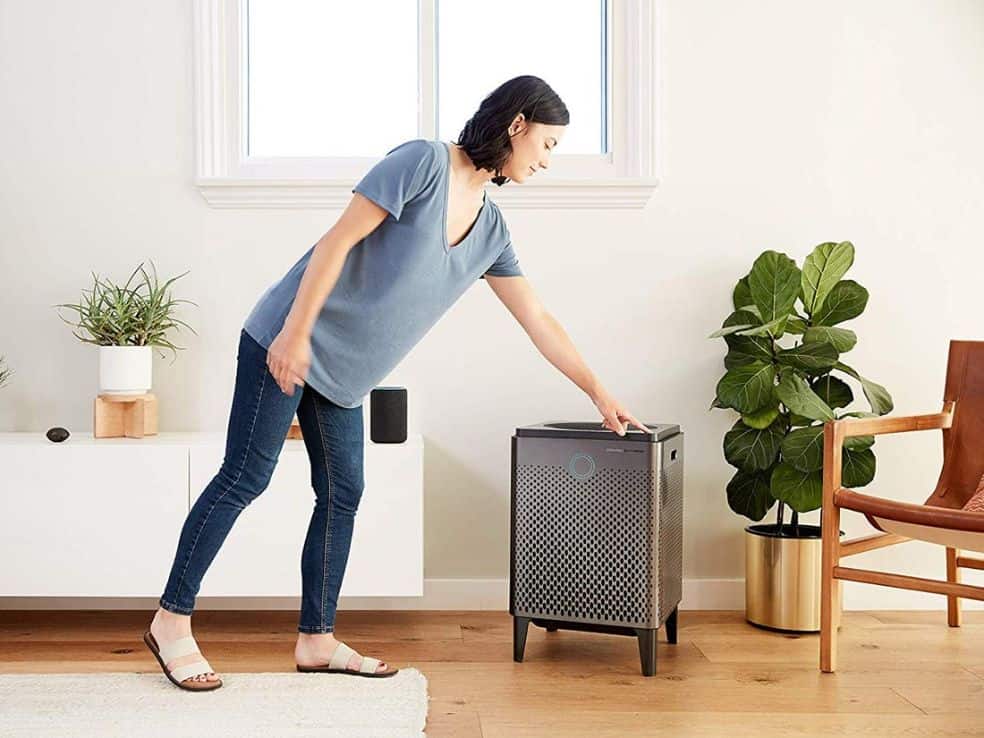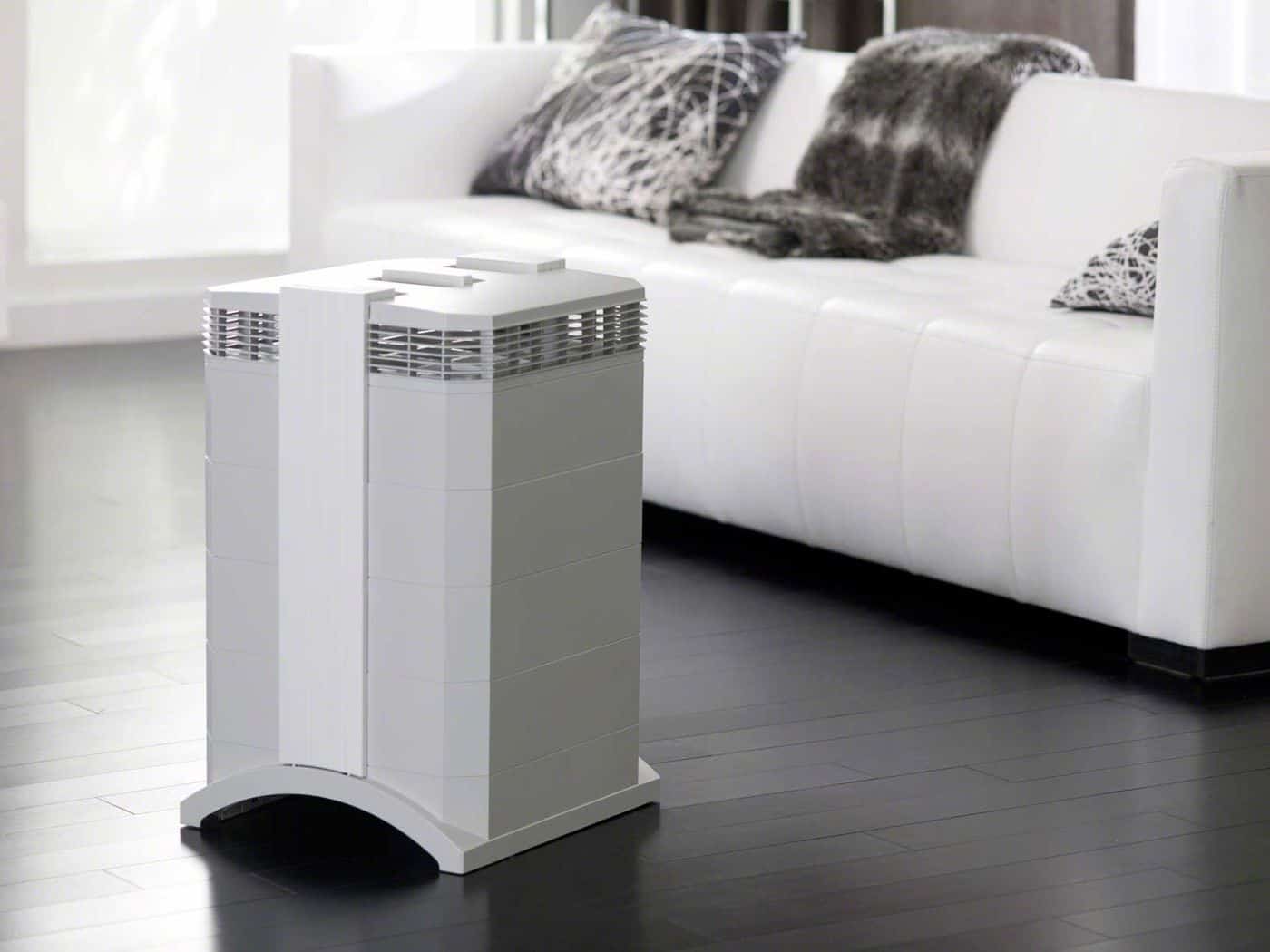
What Should You Look For When Buying An Air Purifier, Specifically?
How Do You Know What Air Purifier to Go For?
We all love the feeling of coming home to a fresh, clean house that smells good and makes us feel relaxed, and an air purifier can go a long way in helping to create that feeling. But with so many options on the market, how do you know what features to look for?

If you’re new to the idea of air purifiers, you might be wondering what they are, how they work, and what the benefits of using one are. Are they worth getting? Once you’ve read through this article, you’ll have a few more answers and you’ll see that an air purifier is a great appliance addition to introduce to your home.
Air purifiers come in all different shapes, sizes, capacities, and features so it can be difficult to pinpoint exactly what will work best for your home. We’ll go through the different things to look for when buying an air purifier and why each item is important, and hopefully that will give you the confidence to make an informed choice.
With that said, let’s start with a little intro to air purifiers:
What is an Air Purifier?
An air purifier is generally a small appliance, typically run on electricity, that takes in air from a space, filters it through and traps particulate matter before releasing the cleaned air. In essence, an air purifier is an air cleaner.

Different types of air purifiers will have different filtration methods and will target different kinds of pollution and particles. Some of the most common things for them to filter out of air include cigarette smoke, urban pollution, and allergens such as pollen and dander.
People choose to get air purifiers for different reasons. It could be that they have an allergy and want to lessen the amount of irritating particles and allergens in the air, or perhaps because they live in a busy city and the pollution can trigger asthmatic episodes. Some people just get them because they want cleaner and healthier air.
Whatever your reason, it’s important to understand the type that you buy and all the benefits it has to offer.
Things to Look for When Buying an Air Purifier
Size
This might seem like an obvious one but it’s something that a lot of people fail to consider and then they end up getting subpar results because the air purifier they chose is too small for their space.
Firstly, you need to decide where in your house you’re going to place your air purifier. You might think that the bedroom is a good place because cleaner air will help you sleep better, or maybe you spend a lot of time in your living room so it makes more sense to have it there.
Perhaps you, your partner, or your friends smoke and you want to ensure fewer smoke particles come into your house, so you decide to place the air purifier in whatever communal space you have. Wherever you decide, it’s vital you get an air purifier that will be able to contend with the room.
There are two metrics available that can help you decide on what size to get: clean air delivery rates (CADR) and air changes per hour (ACH). These specifications should be listed on the packaging of most air purifiers so make sure you have a read.
CADR refers to how quickly the machine can filter polluted air and return clean air into your home. The CADR rating will give you a fairly reliable idea of how big a room the air purifier can handle, as well as allow you to compare the effectiveness of several models.
ACH tells you how many times the air purifier can replace polluted or stale air in a room with clean air per hour. With ACH, you can see how many square feet of space your purifier will be able to clean at the stated turnover rate, and these rates will be listed as 4x, 6x etc.
Comparing CADR and ACH between models will help you to determine that size is appropriate for your space.
Noise Level
The amount of noise an air purifier makes might seem a bit trivial at first, but consider this – this appliance is probably going to be running fairly constantly in your home. The last thing you want is for the noise level to disturb your sleep, tv-viewing, and socialising.
Depending on the size, brand, and purification method of the air purifier, the type and volume of noise you get might be very different. Starting with purification method, air purifiers fall into two main filtration categories: HEPA and ionic.
HEPA stands for high efficiency particulate air and any purifier labels itself as such must remove at least 99.95% of particulate matter of 0.3 micron diameter. HEPA filtered air purifiers are very common, but unfortunately, because they are fan assisted, they tend to be the noisiest.
Ionic air purifiers, commonly referred to as air ionisers, work by emitting negatively charge ions which attract and bond to positively charged ions in dust, allergens, and bacteria, making them heavier so that they fall to the floor (or electrostatic collection plate – if your purifier has one) to be disposed of. Due to the lack of fan, these air purifiers are virtually noiseless.
Where size is concerned, larger air purifiers will typically make more noise than small ones, unless a small air purifier is placed in too large a room. Using the wrong size air purifier for the space will force the machine to work harder, in turn making it louder.
Brand will also come into play to an extent. Without going into specifics, cheaper brands and models are likely to be louder as a general rule than more expensive ones. You might be paying more upfront for a quieter air purifier, but this will be worth it in the long run.

Type of Filtration VS. Type of Pollution
As mentioned in the above point, there are two main filtration types: HEPA and ionic, and aside from them working in different ways, they also tackle different kinds of pollutants.
Ionic purifiers work to remove the following types of particles from your air:
- Dust and pollen
- Mould and fungi spores
- Some kinds of viruses and bacteria
- Smoke
- Volatile organic compounds (eg benzene and formaldehyde)
While this might seem like an impressive list, the main drawback is that these particles might be removed from the air, but they are still present in the room, collecting on the floor or electrostatic plate, which means you need to manually clean them up to get rid of them properly.
Ionic air purifiers also don’t remove odours, and unfortunately produce small amounts of ozone as they run which is harmful for the environment as well as for individuals with asthma and other respiratory problems.
HEPA filtered air purifiers remove the following types of particles from your air:
- Dust and pollen
- Mould and fungi spores
- Smoke
- Dust
- Dander and hair
The advantage of having a HEPA filter is that the contaminants are literally trapped by the filter rather than being left on the ground, which means your space and air will be cleaner overall. HEPA air purifiers are probably the most commonly sought-after choice.
Unfortunately, they don’t remove odours or chemical fumes from the air, and can be costly due to needing frequent filter replacements depending on how polluted the space is. Supplementing a HEPA filter with a carbon filter can help to remove odours and other harmful particles so a combination of the two can be found in many air purifiers.
Running Cost
As mentioned briefly above, HEPA air purifiers can be more costly than ionic air purifiers as they require frequent filter replacements whereas an ionic air purifier’s electrostatic collection plate can be cleaned and reused repeatedly.
This is not the only expense to consider however, as both types also run on electricity. Regardless of which route you decide to take, make sure you look for the energy efficiency rating before you buy.
It probably goes without saying that smaller purifiers will use less energy than larger ones, but this only helps if you’re using it for a small room. Overworking a small purifier in a large space will use more energy and will exhaust the air purifier more quickly, shortening its overall lifespan.
If you can get by using a slower fan setting on your purifier then you’ll use less energy, and some air purifiers even have “eco modes” that increase running efficiency.

On a Balance
The factors explored in this article are by no means the only ones to consider, however they should provide you with a solid jumping off point for making the right decision. Noise, size, cost, and purpose are all vital features to think about, and combining all four should help you to understand what you’ll need.
One other important bit of advice to keep in mind is that many air purifier manufactures and retailers might make outlandish claims about how effective their models are or about the health benefits you might experience. Use your best judgement and take these claims with a pinch of salt – think logically and you’ll make a good choice and reap the benefits.
Last Updated on January 25, 2023 by Simon